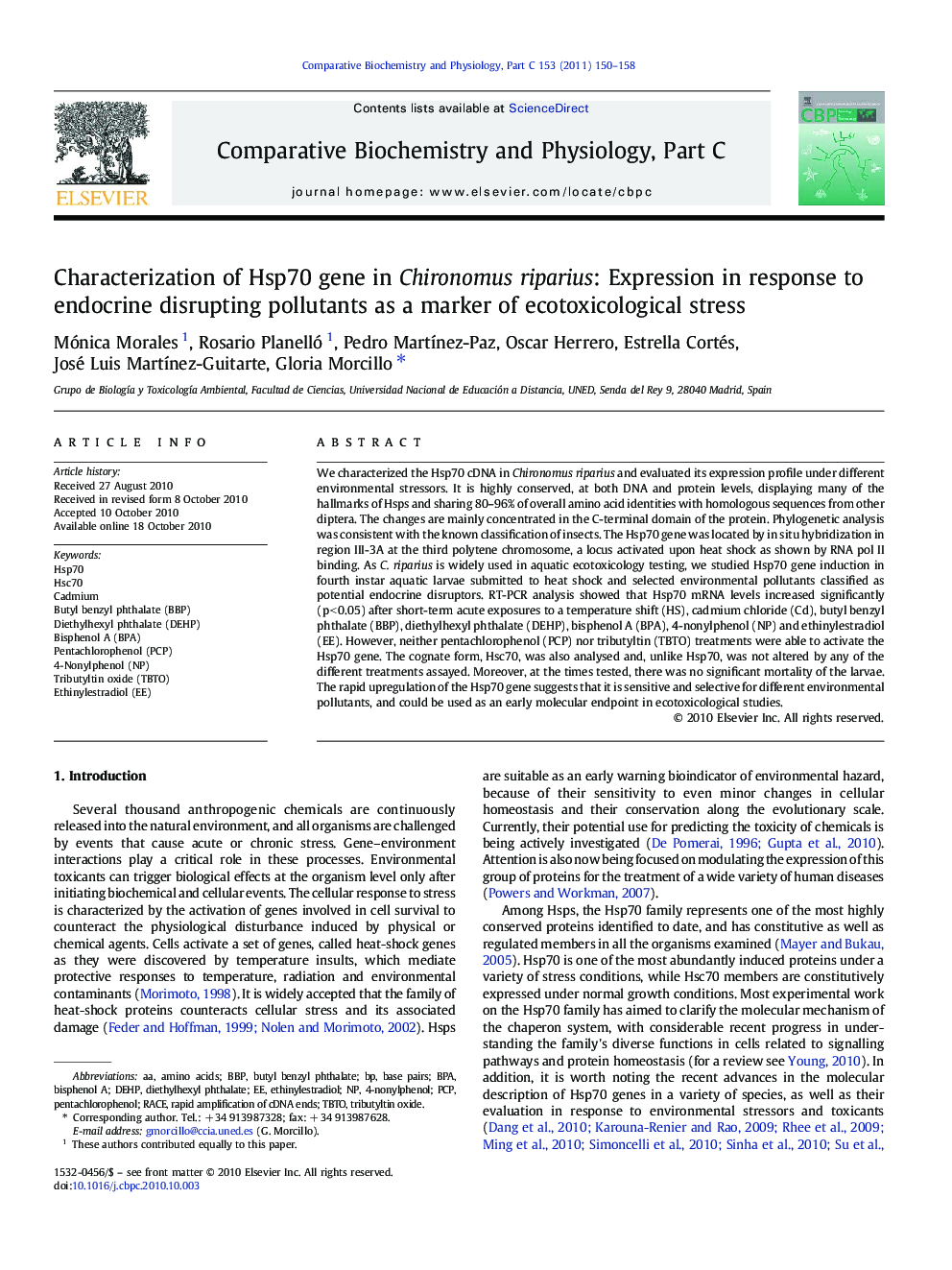| Article ID | Journal | Published Year | Pages | File Type |
|---|---|---|---|---|
| 1977543 | Comparative Biochemistry and Physiology Part C: Toxicology & Pharmacology | 2011 | 9 Pages |
We characterized the Hsp70 cDNA in Chironomus riparius and evaluated its expression profile under different environmental stressors. It is highly conserved, at both DNA and protein levels, displaying many of the hallmarks of Hsps and sharing 80–96% of overall amino acid identities with homologous sequences from other diptera. The changes are mainly concentrated in the C-terminal domain of the protein. Phylogenetic analysis was consistent with the known classification of insects. The Hsp70 gene was located by in situ hybridization in region III-3A at the third polytene chromosome, a locus activated upon heat shock as shown by RNA pol II binding. As C. riparius is widely used in aquatic ecotoxicology testing, we studied Hsp70 gene induction in fourth instar aquatic larvae submitted to heat shock and selected environmental pollutants classified as potential endocrine disruptors. RT-PCR analysis showed that Hsp70 mRNA levels increased significantly (p < 0.05) after short-term acute exposures to a temperature shift (HS), cadmium chloride (Cd), butyl benzyl phthalate (BBP), diethylhexyl phthalate (DEHP), bisphenol A (BPA), 4-nonylphenol (NP) and ethinylestradiol (EE). However, neither pentachlorophenol (PCP) nor tributyltin (TBTO) treatments were able to activate the Hsp70 gene. The cognate form, Hsc70, was also analysed and, unlike Hsp70, was not altered by any of the different treatments assayed. Moreover, at the times tested, there was no significant mortality of the larvae. The rapid upregulation of the Hsp70 gene suggests that it is sensitive and selective for different environmental pollutants, and could be used as an early molecular endpoint in ecotoxicological studies.
